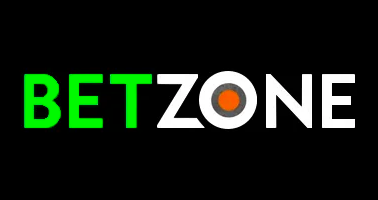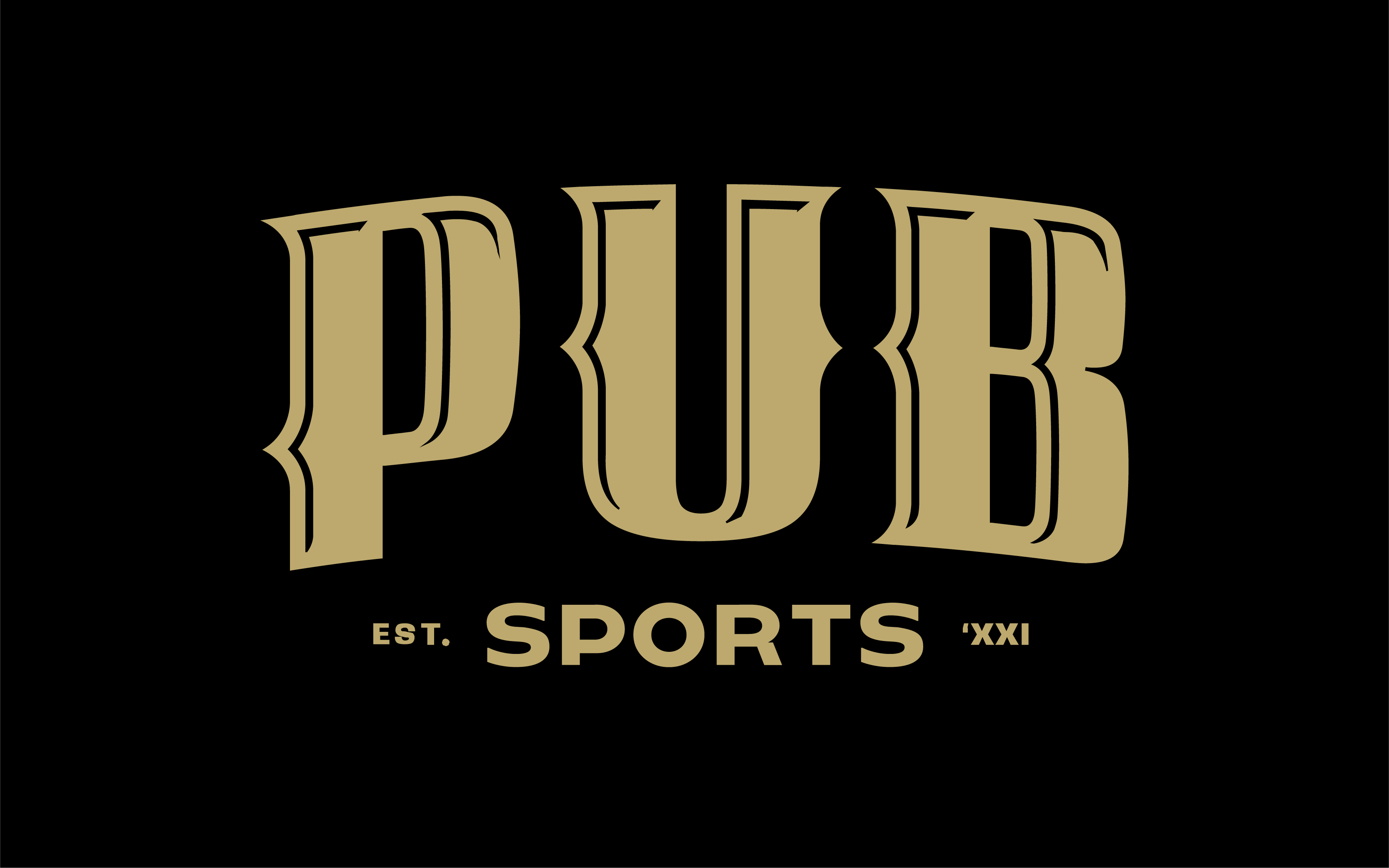Bet £10 Get £40 In Free Bets
Claim Bonus
#AD 18+ New customers only. 7 days to place qualifying bet of £10 at 1/1 (2.0) to receive 4 x £10 Free Bets: 1 x £10 football, 1 x £10 horse racing & 2 x £10 Bet Builders. Free Bets cannot be used on e-sports and non UK/IE horse racing. 7 day expiry. Exclusions apply. Stake not returned. 18+. T&Cs apply
£10 Free Bet No Deposit Required
Claim Bonus
#AD 18+ New customers only. Free bets credited following registration. Must be wagered 1x at min odds of 1/2 (1.5). 7-day expiry. Stake not returned. Promotional terms apply. 18+. Gambleaware.org
Bet £10 & Get £30 in Free Bets
Claim Bonus
#AD. New customers only. Min deposit requirement. Free Bets are paid as Bet Credits and are available for use upon settlement of bets to value of qualifying deposit. Min odds, bet and payment method exclusions apply. Returns exclude Bet Credits stake. Time limits and T&Cs apply. Registration Required
Bet 5p & Get £30 In Free Bets
Claim Bonus
#AD 18+ New customers only. First single & E/W bet only. Odds of 1/1 or greater. 3 X £10 bet tokens. Free bet stakes not included in returns. Free bets exclude virtuals. Free bets are non withdrawable. Free bets expire after 30 days. Eligibility restrictions and further T&Cs apply.New customers only. First single & E/W bet only. Odds of 1/1 or greater. 3 X £10 bet tokens. Free bet stakes not included in returns. Free bets exclude virtuals. Free bets are non withdrawable. Free bets expire after 30 days. Eligibility restrictions and further T&Cs apply.
Bet £10 Get £50 In Bet Builder Bets
Claim Bonus
#AD 18+ New Customer offer. Place a min £10 bet on Football on odds of min 1.5 (1/2), get £50 in Free Bet Builders after the qualifying bet has been settled. Rewards valid for 90 days. Only deposits via cards & Apple Pay will qualify. T&Cs apply. Please Gamble Responsibly.
Bet £10 - Get £40 Bonus + 2 Goal Early Payout
Claim Bonus
#AD 18+ UK (excl. NI) new customers. Min dep £10, stake £10, odds Evs. Get £30 free bets + £10 casino bonus. Free bets valid 7 days. Casino bonus: accept in 14 days, 3-day expiry, 5x wagering, max £100. One per customer/house/IP. Restrictions apply. 30 days to qualify. T&Cs apply. Goals Ahead
18+. Pre-match only. Paid out if team leads by 2 goals (regardless of result). 90-min singles & multiples. Max payout £50k on losing selections. Restrictions apply. T&Cs apply. Applies to bets placed on match betting ahead of kick off. Get paid out as a winner if your team goes 2 goals ahead even if they win, lose or draw. 90 mins only. Applies to Singles & Multiples. Max €/£50k on losing selection. Account & payment restrictions apply. T&Cs apply.
Bet £10 Get £50 In Free Bet Builders, Accas or Multis
Claim Bonus
#AD 18+ Place a min £10 bet on Sportsbook on odds of min EVS (2.0), get £50 in Free Bet Builders, Accumulators or multiples to use on any sport. Rewards valid for 30 days. Only deposits via cards or Apple Pay will qualify. T&Cs apply. Please Gamble Responsibly.
Bet £10, Get £10 in Free Bets
Claim Bonus
New customers only. This offer is valid for 7 days from your new account being registered. Min Deposit: £10. Free Bet awarded: £10. 1 x £10 must be wagered at odds of 1.75+ to unlock Free Bet. Debit Card deposits only (exclusions apply). Free bet will expire 7 days after the 1st deposit. 18+. GambleAware.org. Bet The Responsible Way. Full Terms apply
Bet £10 Get £20 In Free Bets + 50 Free Spins
Claim Bonus
18+ New UK customers. Bet £10 on accas with 4+ legs, min odds 3/1 (4.0). Get 4x £5 Free Bets and 50 Free Spins, valid for 7 days on selected bets and games only. T&Cs apply. GambleAware.org
Bet £10 Get £40 in Free Bets
Claim Bonus
#AD 18+ New UK customers. Min £10 first deposit. Place a bet of £10 at min odds of 2.0 and get £40 in Free Bets within 48 hours. Restrictions apply. Full T&Cs apply, GambleAware.org.
Bet £10 Get £30 In Free Bets
Claim Bonus
#AD 18+ New Customers Only. Opt in and bet £10 on sports (odds 1/1+) within 3 days of signing up. Get 3x£10 Free Bets for set markets (odds 1/1+) which expire in 5 days. T&Cs apply. GambleAware.org | Please gamble responsibly
25% Boost On Your First Football Acca
Claim Bonus
Applies to New UK/IE customers who sign up via approved partner sites with promo code AKACCA100. Place your first qualifying bet as a Treble or Up on Any Sport (minimum three selections on combined odds of Evens) and AK Bets will boost the profit gained on that initial bet by 25% in the form of a Free Bet up to a value of £100. GambleAware.org, T&Cs apply.
Bet £20 Get £20 In Free Bets
Claim Bonus
#AD 18+ Offer valid once per household for new UK customers only. Max £20 in Free Bets: 1x £10 Free Bet and 2x £5 Bet Builder Free Bets. Minimum £20 sports wager required to activate. Void, cancelled, or cashed-out bets excluded. First deposit must be £20+ with a qualifying bet per Free Bet Terms. Prohibited play types listed in Bonus Policy. Full T&Cs apply.
Bet £10 Get £40 In Bonuses
Claim Bonus
#AD 18+ New customers online only. Eligibility restrictions apply. Only valid with code B10G40 on registration. £10 min qualifying bet at 1/1 (2.0) odds or greater across sports or racing (if EW then min £10 Win + £10 Place). Receive £20 Tote Credit, £10 Free Sports Bet and 50 Free Spins on Big Bass Bonanza within 48 hours of qualifying bet settlement. 7-day expiry on free bets & Tote Credit. Your first bet will be your qualifying bet. One per customer. UK & ROI customers only. Full T&Cs apply. Gambleaware.org.
Bet £10 Get £60 In Free Bets
Claim Bonus
#AD 18+ New UK customers only, Place a £10 fixed odds bet at minimum odds of 1/2 and get 3 x £10 free fixed odds bets, 3 x £5 Total Goals football spread bets and 3 x £5 Winning Favourites spread bets on consecutive days and a £1 racing Race Index spread bet. The promotion will run from 11th March 2025 until discontinued by Spreadex Ltd. using its reasonable discretion, ("Promotion Period"). Offer can only be used once per customer. Full T&Cs apply.
Bet £10 Get £50 in Free Bets
Claim Bonus
#AD New customers only. Register with BETFRED50. Deposit £10+ via Debit Card and place first bet £10+ at Evens (2.0)+ on Sports within 7 days to get 3 x £10 in Sports Free Bets & 2 x £10 in Acca Free Bets within 10 hours of settlement. 7-day expiry. Eligibility & payment exclusions apply. T&Cs apply
Double the Odds
Claim Bonus
Click here for full T&Cs.#AD 18+ New Customers Only. For sports bets placed with real money and the Odds Boost Token, up to a maximum £10 stake (£5 each way). PayPal deposits do not qualify, and unused portions of the token are forfeited. “Double the odds” applies to fractional odds profits only, with extra winnings paid in cash on settlement. Token must be used in 60 days, offer is limited to one per person/household. Full T&Cs apply, and Grosvenor Casinos reserves the right to withhold bonuses or exclude customers in cases of abuse, multiple accounts, or failure to verify identity.
Bet £20 Get £20 Free Bet
Claim Bonus
#AD 18+ Full T&Cs apply. New UK customers only. The qualifying bet should be either a Single or Acca (2+ selections) bet, start at £20, have 1.9 or greater odds and must be settled within 7 days of opt-in. The Free bet include: 1 x £20 Free bet any Live or Pre-Match event. Max payout – £500. 7-day expiry. To unlock the offer, complete the first deposit via the banking app secured by Truelayer. Profit boost: One boost per day; claim required. 1 day to claim (by 23:59 UTC+3). Max stake £30. Single bets only. No Free Bets. Profit Boost valid for 24 hrs. Max payout £1,000. Credited within 24 hrs. 18+. BeGambleAware.com
50% Back As A Free Bet On First Day Losses Up To £25
Claim Bonus
#AD 18+ New customers only (excludes BetTom casino). Get 50% of first-day losses refunded as a free bet up to £/€25, credited within 24 hours. To qualify, place at least 3 bets of £/€10+ on separate events with odds of 2.0 (evens) or higher. First-day losses are all settled stakes minus returns before 23:59. Free bets must be used fully within 7 days; stakes are not returned and free bets are non-withdrawable. Limited to one free bet per person, household, email, IP, phone, payment method, and shared locations. Abuse, fraud, or multiple accounts will lead to disqualification. Full T&Cs apply
Bet £10 Get £40 Free Bet
Claim Bonus
#AD 18+ New Players Only. Free bet - one-time stake of £40, min odds 1.5, stake not returned. 1X wager the winnings. Wager from real balance first. Wager calculated on bonus bets only. Max conversion: £200. Free bets and Bonuses are valid for 7 days. Limited to 1 sport & 5 casino brand/s within the network. Withdrawal requests void all active/pending bonuses. Excluded Skrill and Neteller deposits. Full Terms apply.
Bet £20 Get £20 in Free Bets
Claim Bonus
#AD New customers only. To qualify for free bets, the new user must place and settle £20 on easyBet markets. The user must bet on at least 2 different events to qualify. The user must place and settle bets at odds of 2.0 or more. An event is classed as two different sporting events. Bets can be placed on singles, multiples and Bet Builders. The user must place and settle bets before the closing date of the promotion to qualify. T's and C's Apply. Be Gamble Aware.
0% commission for 60 days
Claim Bonus
#AD 18+ Use code COMMFREE to trade with 0% commission for 60 days. New UK, IE & Malta users only. Min. £10/€10 first deposit only using Debit Card or Instant Banking. Full T&Cs apply. GambleAware.org
Bet £10 Get £20 In Free Bets
Claim Bonus
#AD 18+ New Customers Only. Opt in deposit & bet £10 or more on any sports market at min 1/1 odds within 7 days of registration. No cash out. Get £20 in sports Free Bets with 7 day expiry. Full T&Cs apply. Gambleaware.org | Please gamble responsibly.
Bet £10, Get £10
Claim Bonus
#AD 18+ New Customers Only. Add a bet to your betslip with the minimum stake of £10 and tick “promotion opt in” on the betslip before placing your bet. Once accepted we’ll credit you with a £10 free bet. Only deposits via debit cards will qualify. Minimum odds on qualifying bet 1/1 (2.0). Your qualifying bet must be placed within 7 days after claiming the offer. Ends 31/12/25 at 23:59 GMT. Full T&Cs Apply.
Bet £40, Get £20 In Free Bets
Claim Bonus
#AD 18+ New customers only. Place a minimum £40 bet on any selection with minimum odds of Evens (2.00) and receive 4x£5 Free Bets. Free bets expire after 24 hours. BeGambleAware.org. T&Cs & Maximum Pay-Outs Apply.
100% back as a Free Bet up to £30
Claim Bonus
#AD 18+. New customers only. Registration required. Valid on your first combo bet (minimum 3 selections, minimum odds of 1.40 per selection, minimum bet of £5). If you lose, you receive a 100% refund up to £30 as Free Bet. Free bet valid for 7 days. The Free Bet can be used on a combo bet with at least 3 selections, minimum odds of 1.40 per selection and maximum odd of 6.00, all sports, excluding horse racing and virtual sports. Gambling can be addictive. Terms & Conditions apply. Please play responsibly. GambleAware.org
Bet £20 Get £20 Free Bet
Claim Bonus
#AD 18+. New customers only. Min deposit: £20. Min wager: £20 at min odds 1/1 (2.00). Max free bet amount: £20. Eligible bets: single, combo, bet builder. Max 1 free bet per user. Max free bet winnings: £200. Free bet is not valid for Horse Racing. Free bet token credited within 24 hours, valid for 14 days. System bet excluded. Free bet min odds: 4/5 (1.80). T&Cs apply. gambleaware.org
Big Odds And High Limits
Claim Bonus
#AD 18+ only | Terms and conditions apply, GambleAware.org
Bet £10 Get £10 Free Bet
Claim Bonus
18+ 1st deposit only. Min deposit £10 | Max bonus £10 | Min Odds 1/1 (2.0) | Max winnings £100 | 5-day expiry | Full T&Cs apply | Gambleaware.org
Bet £10 Get £30
Claim Bonus
#AD 18+ New customers only. Opt in & bet £10+ via mobile on any football market at 2.00+ odds within 7 days. No Cash out. Get 6x £5 Free Bets on selected markets. Free bets expire in 7 days. Card payments & Apple Pay only. T&Cs apply. GambleAware.org | Please gamble responsibly
Bet £10 Get Up To £20 In Free Bets
Claim Bonus
#AD 18+, New customers only. Opt in, bet £10 on any sports (odds 2.00+) in 7 days. No cash out. Get 4x£5 sports free bets for set markets (odds 2.00+), which expire in 7 days. T&Cs apply. GambleAware.org | Please gamble responsibly
Bet £20 Get £30 Free Bets
Claim Bonus
#AD New Players Only. Free bet - one-time stake of £30, min odds 1.5, stake not returned. 1X wager the winnings. Wager from real balance first. Wager calculated on bonus bets only. Max conversion: £200. Valid for 7 Days from receipt. Limited to 1 sport & 5 casino brand/s within the network. Withdrawal requests void all active/pending bonuses. Excluded Skrill and Neteller deposits. Full Terms Apply.
50% Back as Free Bet up to £50
Claim Bonus
#AD T&Cs apply. 18+ New customers only. You must place 3 x £10 sportsbook bets to qualify. Money back as free bets up to £50. Must use code welcome50 when creating an account
Bet £10 Get £20 Free Bet
Claim Bonus
#AD 18+ New UK Customers Only. Min. stake amount: £10 with real money with you first ever bet within 7 days of your registration. Any bet that uses Cash Out, full or partial, will not count as a qualifying bet. Free bet amount credited to your account after the settlement of qualifying bet. Free bet £20, min odds 1/2 (1.5) Full T&Cs apply.
50% Back as a Free Bet Up To £25
Claim Bonus
Applies to single bets on UK & IRE Racing. Click for T&Cs.
Bet £5 Get £20 In Free Bets
Claim Bonus
#AD 18+ New UK+ROI Customers only. Certain deposit methods & bet types excl. Min first £/€5 bet within 14 days of account reg at min odds 1/2 to get 4x £/€5 free bets. Free bets available to use on selected sportsbook markets only. Free bets valid for 7 days, stake not returned. Restrictions + T&Cs apply.
50% Back as a Free Bet up to £25
Claim Bonus
#AD 18+ New UK Customers Only. Bet £10+ on any sportsbook markets at odds of evens (2.00) or greater. No cash out. Get 50% back of your first day’s losses (until 23:59) as a Free Bet up to £25, valid for 7 days. Min. 3 bets required, with 2 bets being at least 50% of your largest stake. Place at least 1 bet of £10+ at odds 2.00+ to receive a £5 Free Bet even if your account is up or losses are under £5. Gamble Responsibly. T&CS Apply.
Up to £25 Free Bet + 25 Free Spins
Claim Bonus
Sign up and place your first sports bet at odds of Evens (2.0) or greater and if it loses, get a free bet equivalent to 50% of your first bet stake (min £10), to a maximum value of £25, plus 25 free spins on Gold Horsey Winner. Full T&Cs apply. 18+ | GambleAware.org
Bet £10 Get £40 In Bonuses
Claim Bonus
#AD 18+. BeGambleAware.org. New GB customers only. Min £10 debit card deposit. Place a £10+ bet at Evens or greater (2.0) each leg on Sports within 7 days. Opt in for £20 in free bets and £20 Casino Bonus. Valid for 7 days. Geographical restrictions and T&C’s apply.
£50 Free Bet + £20 Casino Bonus
Claim Bonus
#AD New Customers Only. If your Sportsbook account shows a net loss by the end of the first day (day ends at 23:59), you'll be awarded a Free Bet equivalent to 50% of the losses, up to £50, plus a £20 Casino Bonus. Terms and conditions apply. GambleAware.org
Bet £10 Get £30 Free Bet
Claim Bonus
New Players Only. Minimum stake £ 30, minimum odds 1.5, stake not returned. 1X wagering the winnings from the free bet. Wagering occurs from real balance first. Wagering requirement is calculated on bonus bets only, wagering starts from real funds. Free bet is valid for 7 Days from issue. Max conversion: £200. Withdrawal requests void all active/pending bonuses. Limited to 1 sport & 5 casino brand/s within the network. Withdrawal requests void all active/pending bonuses. Excluded Skrill and Neteller deposits.Full Terms apply.
50% Back As Free Bet Up To £100
Claim Bonus
#AD 18+ | New Customers Only | Promo Code: WELCOME10 | Place a single £10 bet within 3 calendar days of registration. Bet must settle on the same day of placement | Min odds Evens (2.00) | Get 2 x £5 UK/Irish Horse Racing Free Bets + 2 x £5 Football Free Bets | Free Bets valid for 7 days | Max win £250 | T&Cs apply | GB residents only | Gamble responsibly
100% Up To £50
Claim Bonus
New bettors; Code SPORT; Wager deposit & bonus 8x; Max qualifying bet stake=initial bonus; Valid 60 days; Min odds, bet and payment method exclusions apply; T&C apply; 18+
Bet £10 Get £30 in Free Bets
Claim Bonus
#AD
T&Cs apply. 18+ New cust only. Opt-in required. Deposit & place a bet within 7 days and settle a £10 minimum bet at odds of 4/5 (1.8) or greater to be credited with 3 x £10 Free Bets: 1 x £10 horse racing, 1 x £10 Free Bet Builder and 1 x £10 football. Free Bets cannot be used on e-sports and non-UK/IE horse racing. 7 day expiry. Stake not returned. GambleAware.org.
Bet £15 Get £10
Claim Bonus
New Players only. Max. Free Bet Token amount: £10.Minimum Deposit: £15. Minimum wagering on Sport to activate the Free Bet Token: £15
Bet £20 Get £30 In Free Bets
Claim Bonus
#AD 18+ New Players Only. Sign Up with Bonus Code: NEW30. Bet and Settle 1x£10 Bet on Matchbook Exchange at odds of 2.0 or more. Bet and Settle 1x£10 Bet on a Bet Builder or Multiple at odds of 3.0 or more, with min 3 selections. Within 72 hours of Qualifying Bets settling user will receive 1x £10 Exchange Free Bet, 1x £10 Multiples Free Bet, and 1x £10 Bet Builder Free Bet. Users making their first deposit by Skrill, Neteller or PaySafe card will not qualify for this promotion. T&Cs Apply. Be Gamble Aware.
Bet £10 Get £30 In Free Bets
Claim Bonus
#AD 18+. Play Safe. From 00:01 on 18.10.2022. £30 bonus. New customers only. Minimum £10 stake on odds of 1/2 (1.5) or greater on sportsbook (excluding Virtual markets). Further terms apply. UK and Ireland residents only. Further terms apply. GambleAware.org
Bet £10 Get £10 + 10 Bonus Spins
Claim Bonus
Min £10 deposit and bet on odds 1/1 or greater. Deposits via PayPal, Neteller, Paysafe, Skrill or Skrill 1-Tap will not be eligible for any free bet offer. Extra bet and bonus spins issued within 24 hours of qualifying bet being settled. Extra bet valid for 14 days, stake not returned. Bonus spins valid for 24 hours, selected games only. T&Cs apply. GambleAware.org
Bet £10 Get £10
Claim Bonus
New customers only. £10 in real money. Bets placed on sports at odds of 2.00 or more to qualify. Bets must be placed 24 hours withing registration. £10 free bets must be wagered on sports. Gambling can be addictive. Play responsibly. T&Cs apply. 18+ only.
Bet £15 Get £10
Claim Bonus
NEW CUSTOMERS ONLY. MAX ONE £10 FREE BETS. QUALIFYING BETS MUST BE PLACED AT ODDS OF 1/1 OR GREATER. PAID AS BONUS TOKEN WITH MIN 4/5 ODDS REQ. SKRILL, NETELLER & PAYPAL NOT ELIGIBLE T&CS APPLY. 18+
Bet £10 Get £30 Free Bet
Claim Bonus
#AD 18+ New Players Only. GambleAware.org Min £10 qualifying bets stake not returned. Free bet - one-time stake of £30, min odds 1.5, stake not returned. 1X wager the winnings. Wager from real balance first. Wager calculated on bonus bets only. Max conversion: £200. Valid for 7 Days from issue. Withdrawal requests void all active/pending bonuses. Excluded Skrill and Neteller deposits
Bet £10 Get £10
Claim Bonus
Bet £10, get £10. £10 minimum deposit. Max £10 free bet is only valid for 14 days. Bet must be placed at odds of 1/1 or greater and be settled within 14 days of placement. System bets no eligible
Bet £10 Get £20
Claim Bonus
New players only. Min £ 10 qualifying bets, stake not returned. Free bet - one-time stake of £ 20, min odds 1.5, stake not returned. 1X wager the winnings. Wager from real balance first. Wager calculated on bonus bets only. Max conversion: £ 200. Valid for 7 Days from issue. Excluded Skrill deposits. Withdrawal requests voids all active/pending bonuses. Full Terms Apply.
Deposit £10 & Get £10 Free Bet
Claim Bonus
#AD 18+ New Players Only. Free bet - one-time stake of £10, min odds 1.5, stake not returned. 1X wager the winnings. Wager from real balance first. Wager calculated on bonus bets only. Max conversion: £200. Free bets and Bonuses are valid for 7 days. Limited to 1 sport & 5 casino brand/s within the network. Withdrawal requests void all active/pending bonuses. Excluded Skrill and Neteller deposits. Full Terms apply
100% Welcome Bonus Up To £30
Claim Bonus
#AD 18+ New players only. Opt-in required. Min deposit £20. Offer is 100% bonus match up to £30 on your first deposit. Bonus funds can be used on a real money sports bet with min odds of 3/4 (1.75) or higher on any sport except virtuals, boosted odds, handicap & draw no bet markets. Bonus funds seperate to cash funds and subject to 5x wagering requirement (bonus + deposit). Only bonus funds count to wagering contribution. Bonus funds expire in 30 days. Full T&Cs apply. Gamble responsibly, gambleaware.org
Bet £10 Get £10 Free Bet
Claim Bonus
#AD 18+ | Welcome bonus for new players only | Maximum bonus is 100% up to £100 | Min. deposit is £10 | No max cash out | Wagering is 40x bonus | Maximum bet with an active bonus is £5 | Eligibility is restricted for suspected abuse | Skrill & Neteller deposits excluded for welcome bonus | Cashback when offered, applies to deposits where no bonus is included | Cashback is cash with no restrictions | T&C's apply |Free bet: Min odds: 2.0 - Free bet value will be deducted from free bet winnings | 18+ | GambleAware.org | Gambling is addictive, please gamble responsibly!
Bet £20 Get £30 Free Bet
Claim Bonus
New Players Only. Min £20 qualifying bets, stake not returned. Free bet - one-time stake of £30, min odds 1.5, stake not returned. 1X wager the winnings. Wager from real balance first. Wager calculated on bonus bets only. Max conversion: £200. Valid for 7 Days from receipt. Limited to 1 sport & 5 casino brand/s within the network. Withdrawal requests void all active/pending bonuses. Full Terms Apply.
Bet £15, Get a £10 Free Bet
Claim Bonus
Bet £15, get £10. £15 minimum deposit. Max £10 free bet is only valid for 14 days. Bet must be placed at odds of 1/1 or greater and be settled within 14 days of placement. System bets no eligible. Neteller,Skrill and Paypal not eligible
Bet £10 Get £10
Claim Bonus
18+. New Customers Only. Max one £10 Free Bet. Qualifying bets at Odds of 1/1(2.00) or greater. Paid as Bonus Token with Min 4/5(180) Odds Req. Skrill, Neteller & Paypal not eligible. BeGambleAware.org. T&Cs Apply
Bet £10 Get £10
Claim Bonus
New customers only. Max one free £10 bet. Qualifying bets must be placed at odds of 1/1 or greater. Paid as bonus token with min 4/5 odds required. Skrill, Neteller & PayPal not eligible. T&Cs apply. 18+
£100 Bonus To Use On The Casino Games Section
Claim Bonus
£100 Bonus To Use On The Casino Games Section
Claim Bonus



































































